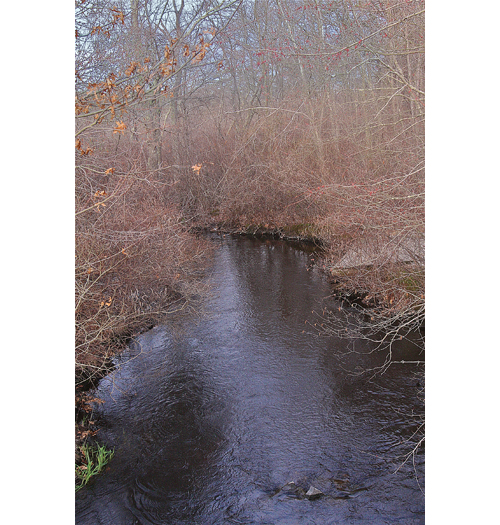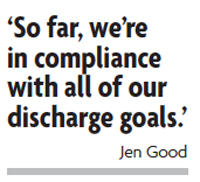Navy making good on pledge to clear water of contamination

A multimillion-dollar chemical treatment facility currently pumping toxic contaminated groundwater from the Enterprise Park at Calverton — left over from years of pollution at the former Grumman site — is meeting its goals thus far, officials said last week. And while the large plume is not traveling underneath the Peconic River, as feared when it was first reported five years ago, it will take several more years of treatment before it is cleaned up.
The pump-and-treat system now operating at the southern end of EPCAL is removing 99 percent of the contaminants in the water being treated, good for 19 pounds of dangerous chemicals so far, officials said. Installed last October, the $4.6 million system that is remediating a plume headed toward the Peconic River will be in operation for at least another two to four years — assuming all goes as planned.
The treatment facility is designed to clean up contaminants that were left behind by the Grumman Corporation when the company built and tested aircraft at the Naval Weapons Industrial Reserve Plant.
The plume, which was first reported by the News-Review in March 2009, is moving southeast from the Grumman site, and has already extended south of the property onto private land and neighboring county parkland. Traces of the contaminants, known as volatile organic compounds, or VOCs, have been found in the Peconic River and in wells at the Peconic River Sportsman’s Club. The town has since extended public water to the club. There are no other private wells in the area
 At the time of the initial News-Review report, residents and environmentalists serving on an advisory council called a Restoration Advisory Board expressed concern that the U.S. Navy appeared willing to wait for the VOCs to disappear on their own rather than take steps to remove them.
At the time of the initial News-Review report, residents and environmentalists serving on an advisory council called a Restoration Advisory Board expressed concern that the U.S. Navy appeared willing to wait for the VOCs to disappear on their own rather than take steps to remove them.
Eventually, after the newspaper reports and pressure from locally elected federal officials including Senator Charles Schumer, the Navy agreed to the current plan to treat the water, which was approved in 2012.
The treatment facility uses two extraction wells to suck up groundwater from the site at the rate of 100 gallons per minute. The VOCs — which are harmful to humans and wildlife — are then removed through a process called air stripping and the treated water is injected back into the ground.
“So far, we’re in compliance with all of our discharge goals, and the air stripper’s [VOC] removal efficiency is greater than 99 percent,” said Jen Good of E&S Environmental Services, which is working on the project.
Ms. Good spoke at last Thursday’s biannual meeting of the Restoration Advisory Board for the EPCAL cleanup project.
“In the first six months, we’ve removed about 19 pounds of volatile organic compounds from the groundwater,” she reported.








